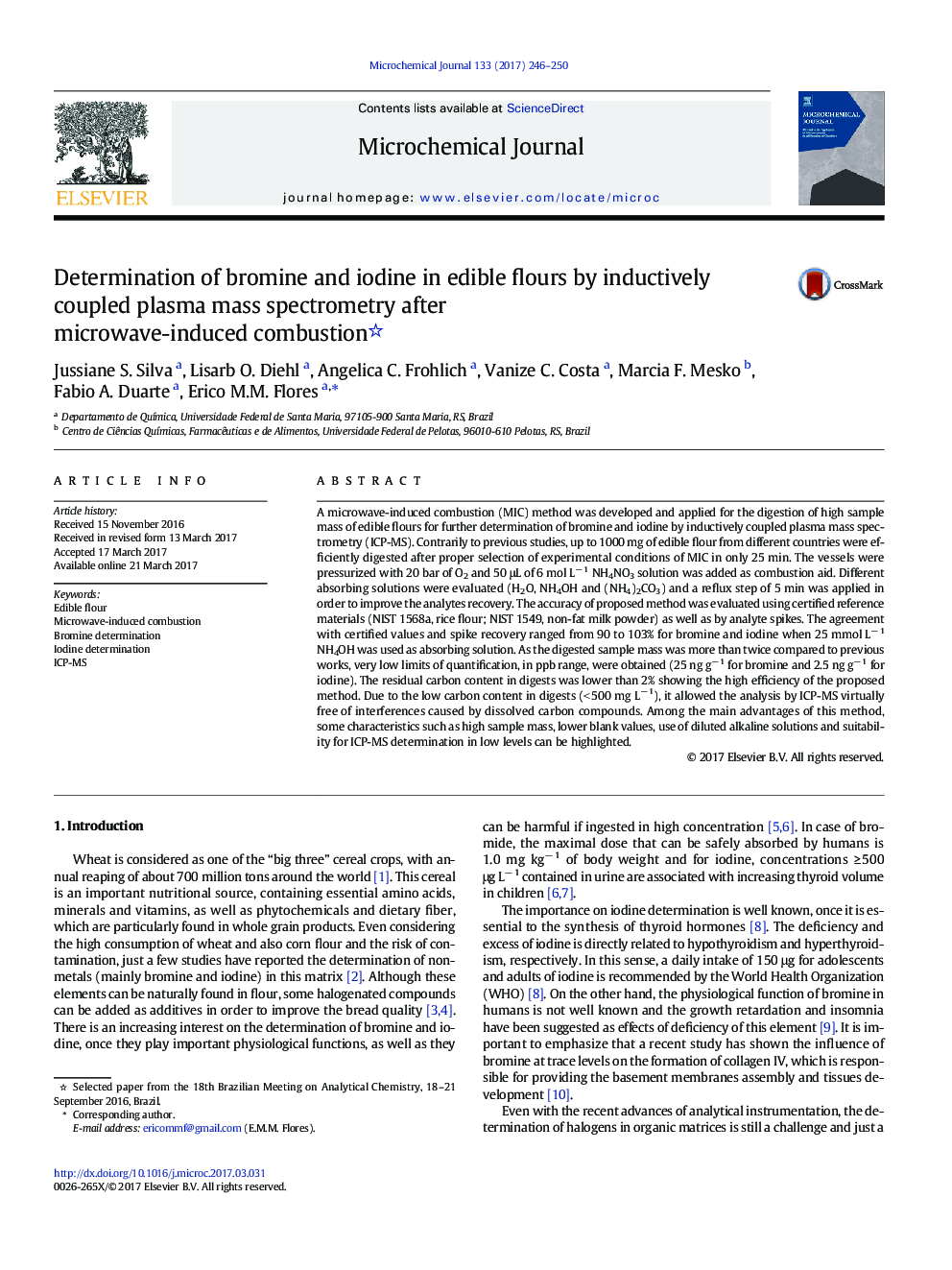| Article ID | Journal | Published Year | Pages | File Type |
|---|---|---|---|---|
| 5139027 | Microchemical Journal | 2017 | 5 Pages |
Abstract
A microwave-induced combustion (MIC) method was developed and applied for the digestion of high sample mass of edible flours for further determination of bromine and iodine by inductively coupled plasma mass spectrometry (ICP-MS). Contrarily to previous studies, up to 1000 mg of edible flour from different countries were efficiently digested after proper selection of experimental conditions of MIC in only 25 min. The vessels were pressurized with 20 bar of O2 and 50 μL of 6 mol Lâ 1 NH4NO3 solution was added as combustion aid. Different absorbing solutions were evaluated (H2O, NH4OH and (NH4)2CO3) and a reflux step of 5 min was applied in order to improve the analytes recovery. The accuracy of proposed method was evaluated using certified reference materials (NIST 1568a, rice flour; NIST 1549, non-fat milk powder) as well as by analyte spikes. The agreement with certified values and spike recovery ranged from 90 to 103% for bromine and iodine when 25 mmol Lâ 1 NH4OH was used as absorbing solution. As the digested sample mass was more than twice compared to previous works, very low limits of quantification, in ppb range, were obtained (25 ng gâ 1 for bromine and 2.5 ng gâ 1 for iodine). The residual carbon content in digests was lower than 2% showing the high efficiency of the proposed method. Due to the low carbon content in digests (< 500 mg Lâ 1), it allowed the analysis by ICP-MS virtually free of interferences caused by dissolved carbon compounds. Among the main advantages of this method, some characteristics such as high sample mass, lower blank values, use of diluted alkaline solutions and suitability for ICP-MS determination in low levels can be highlighted.
Related Topics
Physical Sciences and Engineering
Chemistry
Analytical Chemistry
Authors
Jussiane S. Silva, Lisarb O. Diehl, Angelica C. Frohlich, Vanize C. Costa, Marcia F. Mesko, Fabio A. Duarte, Erico M.M. Flores,
